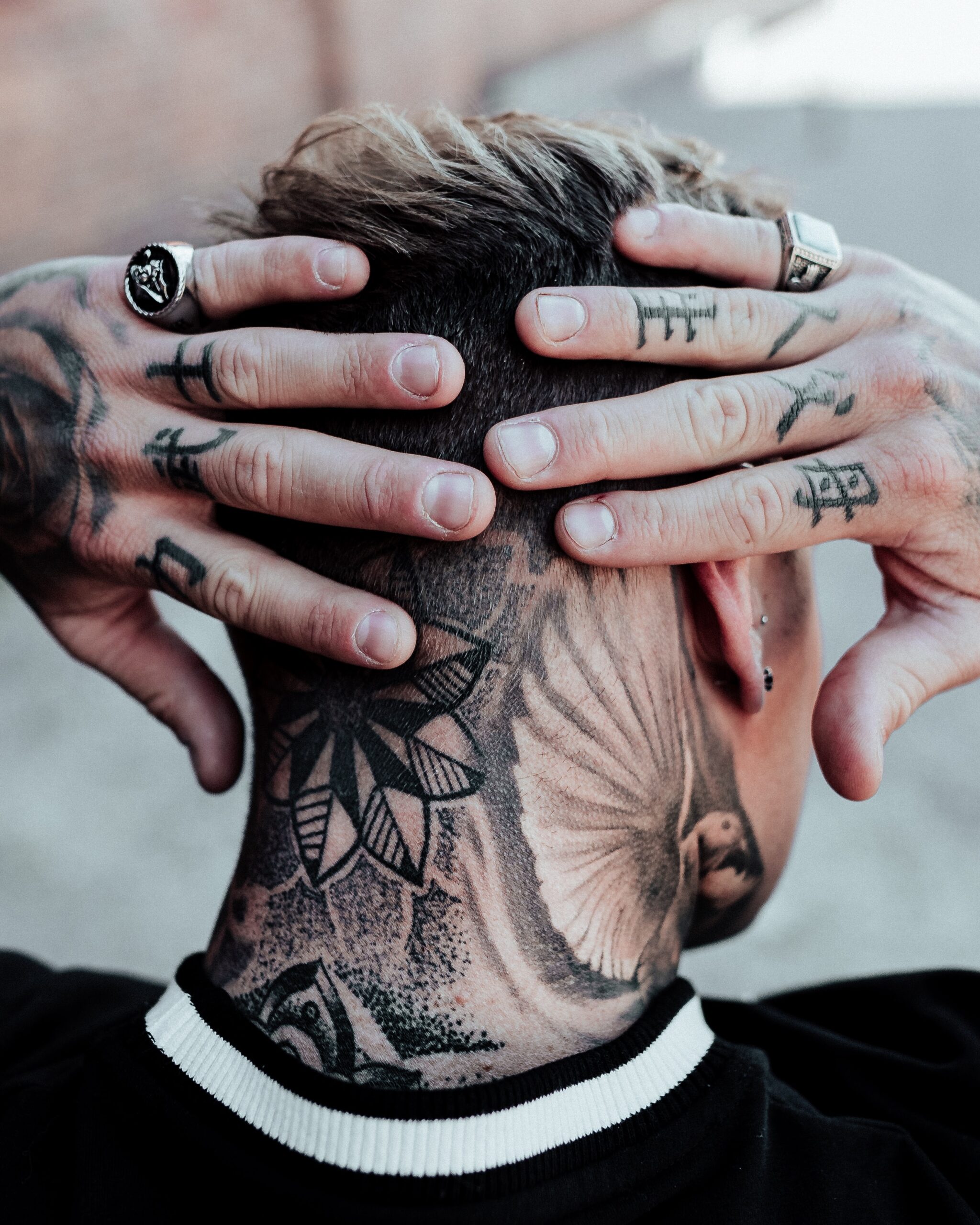
Tattoo Aftercare
Proper aftercare is crucial to ensure your tattoo heals well and retains its vibrancy. Here’s a general guide for tattoo aftercare:
Leave the Bandage On: Your tattoo artist will likely cover your fresh tattoo with a bandage or plastic wrap. Leave it on for the time recommended by your artist (usually a few hours).
Cleanse Gently: After removing the bandage, gently wash the tattooed area with lukewarm water and a mild, fragrance-free soap. Use your clean hands, not a washcloth or sponge, to avoid irritation. Pat dry with a clean, soft towel.
Apply a Thin Layer of Ointment: Apply a thin layer of tattoo-specific ointment or a recommended product. Avoid using too much, as excessive moisture can lead to issues like delayed healing or color loss.
Keep it Moisturized: After a few days, transition from ointment to a fragrance-free, water-based moisturizer. Apply a thin layer 2-3 times a day to prevent the tattoo from drying out.
Avoid Picking or Scratching: Do not pick at scabs or peel any flaking skin. Let it heal naturally to avoid scarring or loss of ink.
Avoid Sun Exposure: Protect your healing tattoo from direct sunlight and tanning beds. UV rays can fade the tattoo and irritate the healing skin.
Avoid Water Immersion: During the initial healing period (1-2 weeks), avoid soaking the tattoo in water, such as swimming in pools, hot tubs, or the ocean. Quick showers are preferable.
Loose Clothing: Wear loose, clean clothing to avoid friction and irritation over the tattooed area.
Stay Hydrated and Eat Well: Proper hydration and a balanced diet can aid in the healing process.
No Gym or Excessive Sweating: Avoid strenuous exercise and excessive sweating until the tattoo is fully healed. Sweat can irritate the healing skin.
Healing Timelines Vary: Healing times can vary, but most tattoos take around 2-4 weeks to heal on the surface. Deeper layers may take a few months to fully settle.
Follow Artist’s Instructions: Your tattoo artist might have specific aftercare instructions based on their technique or style. Follow their advice for the best results.

Does Getting a Tattoo Really Hurt?
Getting a tattoo can be a painful experience, but the level of pain varies depending on several factors:
Tolerance to Pain: People have different pain thresholds, so what might be very painful for one person may be less so for another.
Location of the Tattoo: The pain level often depends on the part of the body where you’re getting the tattoo. Areas with more nerve endings and thinner skin, such as the ribs, feet, and hands, tend to be more painful. Conversely, areas with more muscle and fat, like the upper arm or thigh, may be less painful.
Size and Complexity: Larger and more intricate tattoos may require more time, which can lead to more discomfort. Smaller tattoos are usually quicker to complete and may cause less pain.
Artist’s Skill: An experienced tattoo artist can work quickly and efficiently, which can minimize the duration of pain. Inexperienced artists may take longer and cause more discomfort.
Pain Management: Some people use numbing creams or topical anesthetics to reduce pain during the tattooing process. Discuss this with your tattoo artist if you’re concerned about pain.
Your Mental State: Anxiety and fear can intensify the perception of pain.
During the tattooing process, you can expect to feel a combination of sensations, including a stinging or burning feeling, similar to a sunburn, as the needle penetrates your skin. The pain tends to be most intense during the initial outline work and may lessen as the tattoo progresses.
It’s important to communicate with your tattoo artist about your pain tolerance and any discomfort you’re experiencing during the session. They can take short breaks if needed and provide guidance on managing the pain.
